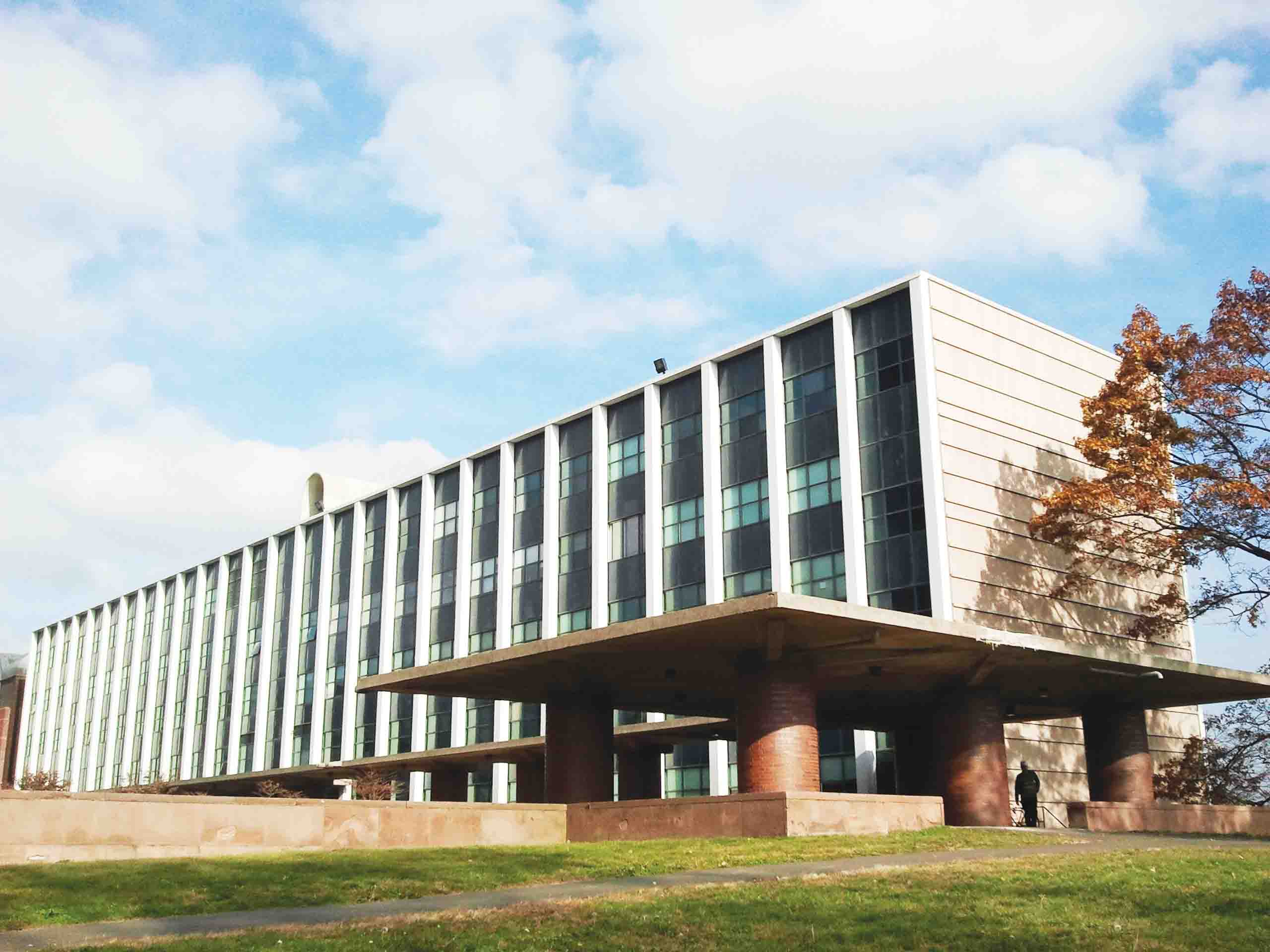
Courtesy of Wikimedia Commons
The Yale community commemorated the demolition of the Josiah Willard Gibbs Laboratory on Science Hill and the groundbreaking of the new Yale Science Building on Tuesday afternoon.
The new Science Building, which is currently set to open in fall 2019 at the site of Gibbs Laboratory, will house the entire Molecular, Cellular and Developmental Biology Department and part of the Molecular Biophysics and Biochemistry Department, as well as various physics and chemistry faculty. With more than 238,000 square feet of office, teaching and research space, the building will be central to the scientific community at the University, according to Steven Girvin, deputy provost for science and technology.
“Today, we celebrate the past and future,” University President Peter Salovey said in his speech at the ceremony, which was held at Kroon Hall. “We look back at Gibbs and think about the great legacy this place has in fundamental scientific inquiry and discovery, and we look toward the future — a future that will take Yale to greater levels of success, prominence and impact in science.”
Although the new building is targeted for a fall 2019 opening, former MCDB Chair Ronald Breaker said that he believes that due to the slow progress in removing the current building, the building’s timeline may be pushed back and will not open for University use until early 2020.
According to Breaker, the building will be primarily used for life sciences research, with specialized facilities for plant biology, including greenhouse spaces on the top floor. There will also be office space and facilities for quantitative biology research, as well as state-of-the-art chemistry labs for intensive organic synthesis, he added.
The basement, which sits on stable bedrock, will be useful as a space for research that requires low vibration and temperatures. This includes cryo-electron microscopy for biologists to study the shapes and mechanisms of individual biomolecules, as well as precision optical instruments for physics and astronomy laboratories, said Girvin.
Molecular biophysics and biochemistry professor Donald Engelman noted that the building will include a 500-seat auditorium that can be used for both science classes and large social science lectures. The building will also include a new dining facility that can serve as a meeting ground for people of all disciplines, he added, due to the building’s proximity to Hillhouse Avenue.
The facilities in the new building will be an immense improvement from those in Gibbs Laboratory, which was constructed in 1955 and suffered from issues caused by poor construction, according to Girvin. Engelman, who spent 30 years in Gibbs Laboratory before moving to the Bass Center, cited problems such as lack of air conditioning and leaky windows and roofs.
The departments that had been housed in Gibbs Laboratory — Physics, Astronomy and Molecular Biophysics and Biochemistry, as well as Science Hill’s professional machine shop — have relocated to various locations this past year, including buildings on Hillhouse Avenue and the Wright Laboratory.
“Whether you are on Science Hill, at the medical school, on West Campus, in Forestry and Environmental Studies, in Nursing or in Public Health, where science is done at Yale — it is going to get, over the next decade, better and better,” Salovey said in his speech.
Salovey said that throughout the upcoming transformation of Gibbs Laboratory, it is important for the University community to pause and think about the legacy of the building’s namesake, whom he described as one of New Haven’s own. Famed physicist and chemist Josiah Willard Gibbs — a member of the class of 1858 who also received a Ph.D. from Yale in 1863 — personified academic excellence, the spirit of scientific inquiry and commitment to education and research, Salovey added.
The building will also be crucial in helping recruit and retain STEM faculty members and students at Yale, Salovey said.
“Just the fact that we are currently working in a construction zone is a huge boost to recruiting, because you can point to the reality of the demolition and our model of the building and its facilities,” Breaker said. “So, we don’t have to wait until 2020 to recruit into this space. We can recruit faculty and students who will occupy this space when 2020 comes.”
Salovey said the construction is one of several ongoing capital improvement projects, including the recent upgrades of the teaching laboratories in Sterling Chemistry Laboratory, the new Center for Innovative Thinking at Becton Plaza and the Wright Laboratory renovations on Science Hill. He added that these projects are essential, as STEM disciplines are fundamental to the University’s mission in improving the world and educating leaders for increasingly global societies.
“I think Gibbs would have appreciated this current situation; there’s a wonderful quote from him about the inevitability of an ordered state of increasing disorder,” Salovey said, the construction site of Gibbs Laboratory visible behind him. “That is what we are observing outside this window at this very moment.”
Correction, Feb. 22: A previous version of this article incorrectly described Ronald Breaker as MCDB Chair. In fact, his chair duties ended in June 2016. Vivian Irish is the current chair.







